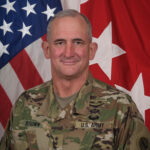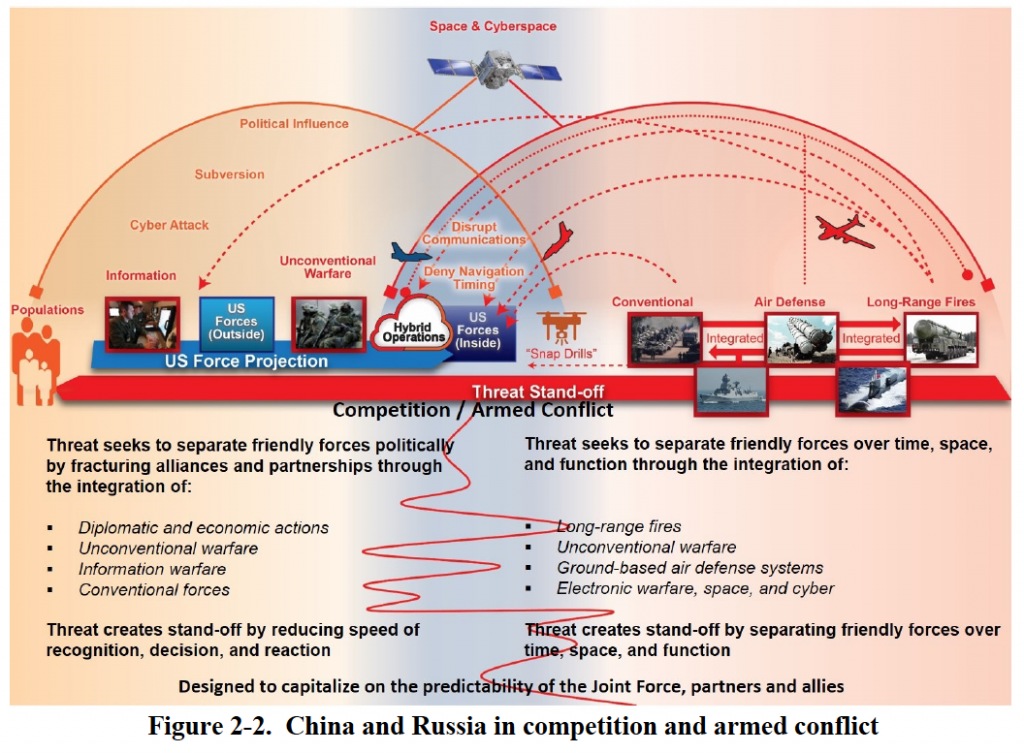Army’s Multi-Domain Unit ‘A Game-Changer’ In Future War
Posted on

A HIMARS (High-Mobility Artillery Rocket System), rocket launchers stowed for travel, backs onto an Air Force MC-130J transport during an exercise.
HUNTSVILLE: The Army’s experimental Multi-Domain Task Force is a “game changer” that’s turned the tide in “at least 10 wargames,” the commander of US Army Pacific says. “Plans are already changing at the combatant command level because of this.”
The key: the unit cracked the Anti-Access, Area Denial (A2/AD) conundrum, Russia and China’s dense layered defenses of long-range missiles, sensors, and networks to coordinate them. “Before, we couldn’t penetrate A2/AD. With it, we could,” Gen. Robert Brown said of the task force’s performance in “at least 10 exercises and wargames.”
“With the Multi-Domain Task Force,” he told me after his remarks to the AUSA Global conference here, “we could impact their long-range systems and have a much greater success against an adversary. If I go into any more, it’d be classified.”
In the future, Brown said here last week, “all formations will have to become multi-domain or they’ll be irrelevant, [but] it’s going to be years before it can happen.” The Army’s goal is modernize enough forces to wage multi-domain warfare against either China or Russia — but not both at once — by 2028. To get there, Brown and other officers said at the conference, the Army and the nation must make some tough decisions. Some particularly knotty examples:
- What units should move from the National Guard and Army Reserve to the regular-active-duty Army — always a politically touchy question — to make them quicker to respond to, or, better yet, prevent a crisis? What regular units can move into the Guard and Reserves?
- What new organizations, from field army headquarters to scout aircraft squadrons to cyber/intelligence battalions, does the Army need to create for conflict on a much larger scale than the brigade-based operations of Afghanistan and Iraq? What part of the Army should modernize first?
- Who can push all four services — especially a reluctant Navy — to adopt Multi-Domain Operations as their joint approach to warfare? (To be fair, many in the Navy reply that they’re already doing MDO.) Who can bring in the State Department, civilian agencies, and foreign allies, all of which struggle to keep up with the US military?
- What role should the military play in the gray zone between peace and war, the “competition” phase where adversaries use proxies, covert operations, hacking, and disinformation to achieve their goals without provoking US forces into opening fire?
The Army is just beginning to wrestle with these questions. We’ll be taking them on this week, because those early attempts at answers at intriguing, starting with the Multi-Domain Task Force itself.
Fire & Maneuver
Just how does the Multi-Domain Task Force change the game? Created just two years ago, its capabilities include intelligence-gathering, long-range attack and the ability to maneuver from island to island across the vast Pacific, Brown told me. It’s a pilot project, an experimental unit initially built around a rocket and missile artillery brigade. But, Brown told the AUSA conference, the original emphasis on “strategic fires” has evolved into a much wider appreciation of the need to combine “fire and maneuver,” an ancient military principle the Army’s now trying to update for the 21st century.
Sometimes, Brown said, the task force is maneuvering in physical space. It can move elements among the Pacific’s 25,000 islands to position itself to deter adversaries, reassure allies, surveil targets, launch long-range missiles or hide from attack.
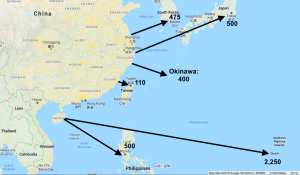
Approximate ranges in miles from Chinese territory to select US and allied targets. SOURCE: Google Maps
“A small formation that is maneuverable is highly survivable,” Brown said, especially on land, where it can take shelter from surveillance in tunnels, jungles, mountains, and other cover that’s simply not available to air and naval units, let alone to static bases the enemy can find on Google Maps. On land, it’s also easier to put out decoys — from things like the inflatable tanks of World War II to high-tech emitters that mimic a full-size radar — since they don’t have to fly or float. A land-based unit can also stockpile missiles and other munitions without the limitations of space or weight that affect aircraft and warships, giving it much greater firepower over time.
Land forces certainly can’t substitute for air and sea, which are far more agile, but the Army can support the other services from land in ways it hasn’t done for decades — if ever. Long-range batteries on islands can provide an “umbrella” of covering fire for friendly forces well out to sea, Brown said, an American equivalent of Anti-Access/Area Denial. The Army can intercept enemy missiles aimed at the fleet. It can shoot down enemy fighters trying to intercept the Air Force. It can even sink enemy ships or force them to flee from the shallows into the open ocean where the US Navy awaits them, like beaters driving game into the huntsman’s path.
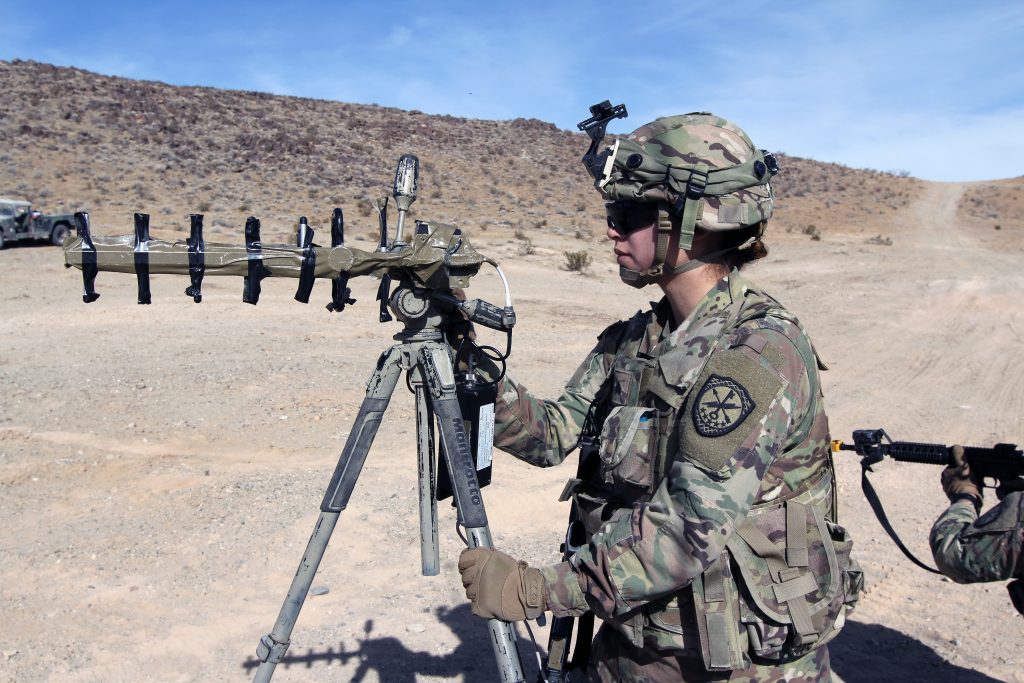
An Army cyber/EW soldier sets up an antenna during exercises at the National Training Center on Fort Irwin, Calif.
Invisible Warfare
Not all fire and maneuver is physical, however, Brown emphasized. In fact, the “heart” of the Multi-Domain Task Force is the recently created (and cumbersomely named) battalion for Intelligence, Information, Cyber, Electronic Warfare, & Space — I2CEWS, pronounced “eye two Qs.”
“Information ops is absolutely critical, [but] we didn’t originally have it in the ICEWS formation,” Brown said. “That was added [because] you’ve got to get it in there.”
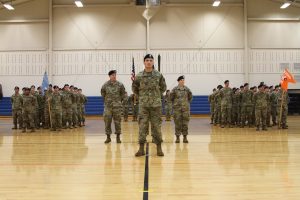
Soldiers of the Army’s newly created I2CEWS (Intelligence, Information, Cyber, Electronic Warfare, & Space) Detachment stand in formation at the activation ceremony Jan. 11.
As the first such unit in the Army, operating in highly classified fields, I2CEWS is still pretty mysterious. From what I’ve gathered, however, it appears to not only pull together data from outside sources — satellites, drones, spy planes — to inform friendly forces of threats and targets, it also wages war in cyberspace and across the electromagnetic spectrum, hacking and jamming the sensors and networks that tell the enemy where to shoot.
But some of the most important contributions of both the I2CEWS battalion and the Multi-Domain Task Force as a whole come before the shooting starts — hopefully, deterring anyone from firing the first shot at all. This is the period traditional US doctrine blandly calls Phase Zero and traditional US strategy calls “peace,” cold or otherwise. Moscow, Beijing, Tehran, and Pyongyang, however, see peace as simply a continuation of war by other means: assassination, Little Green Men, economic pressure, online espionage, social media disinformation, and more. The US is belatedly recognizing this period as what the National Defense Strategy calls “competition,” as opposed to “conflict” — although our adversaries would consider both to be forms of conflict, complete with violent death, just on a different scale.
“Phase Zero…I never liked that term, it implied nothing was happening. Boy, stuff is happening all the time now,” Brown said. So for the I2CEWS battalion in particular, he said, “they must be present in the competition phase, that’s when they do their best work.”
To paraphrase Woody Allen, a big part of the conflict phase is just showing up. Since the 1990s, when the US largely withdrew its massive Cold War garrison from Europe, the US has adopted an “expeditionary” approach with few foreign bases. Most units deploy from the United States as needed. The problem is they’re increasingly needed all the time. In Europe, the Army now conducts back to back deployments of one armored brigade after another to deter Russian aggression. But in most parts of the world, even most parts of Europe, there are long gaps between international exercises or crisis operations where the US military simply isn’t around.
“Russia and China, they’ve been there the whole time,” Brown told me. “If you’re not there in the competition phase, you’re coming in late. You’ve got to be there to compete, [and] quite honestly, before we had Multi-Domain Ops, the Multi-Domain Task Force, that wouldn’t have happened.”
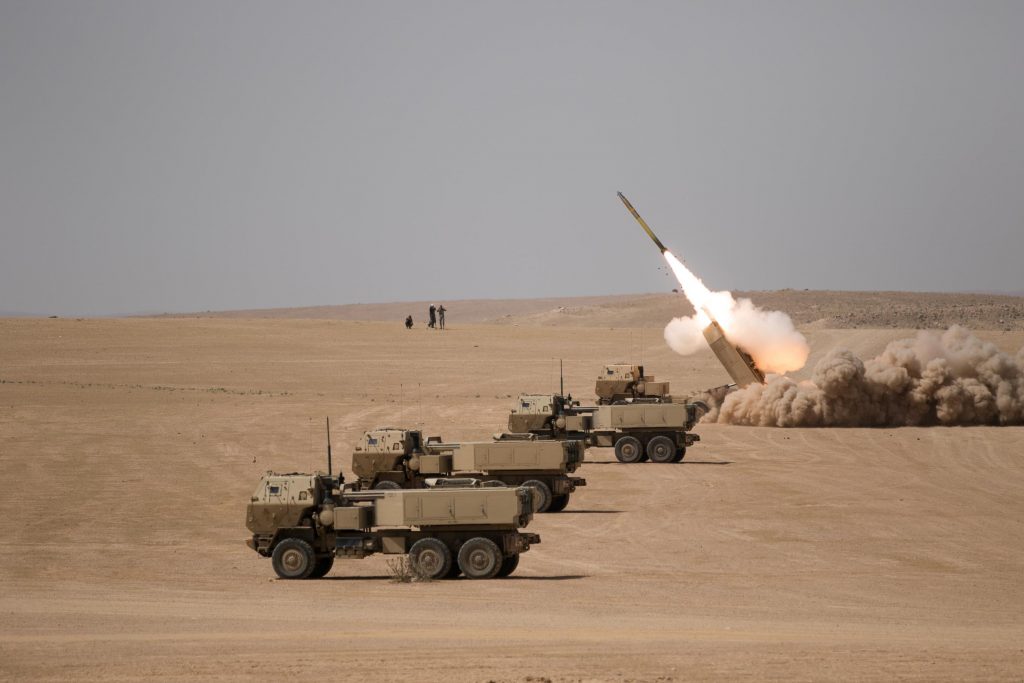
US Army HIMARS (High Mobility Artillery Rocket System) trucks conduct a live fire exercise in Jordan in 2017
Competition & Perception
Much of the “competition phase” is the kind of high-stakes shadow-boxing familiar to veterans of the Cold War. The Army believes it needs not only to passively collect intelligence, but to actively test enemy systems, using both electronic transmissions and physical maneuver to “stimulate” enemy radars, jammers, cyber defenses, and physical units into responses that can be monitored, analyzed, and fed into targeting databases. It also needs to deter adversaries by consciously revealing some capabilities and concealing others, publicly flexing some muscles to show US strength while keeping secret weapons in the shadow so enemy planners are never sure what they’re dealing with.
“It’s really essential, something we’ve been good at a long time” — Patton’s fake army before D-Day — “but we’ve kind of lost a little bit: denial and deception,” Brown said. “You don’t want to be so obvious and predictable.”
That’s where the second “I” in I2CEWS, information, comes in. But information operations means different things to different audiences, from hacking networks to handing out leaflets.
“Perception is very powerful,” Brown stressed. “A tweet can go around the world in seconds, and look at the impact.”
Twitter, Facebook, and other social media were certainly central to Russia’s 2016 campaign to influence US elections. They’ve been high-speed channels for propaganda, disinformation, calls to arms, and even bomb raid warnings from Syria to Venezuela. It’s a whole new form of conflict where the US government appears to be woefully behind.
But is this kind of information war one the Army should be fighting? That’s one of the knotty questions the service — let alone the wider government, Congress, and the public — has barely begun to untangle.
Subscribe to our newsletter
Promotions, new products and sales. Directly to your inbox.

